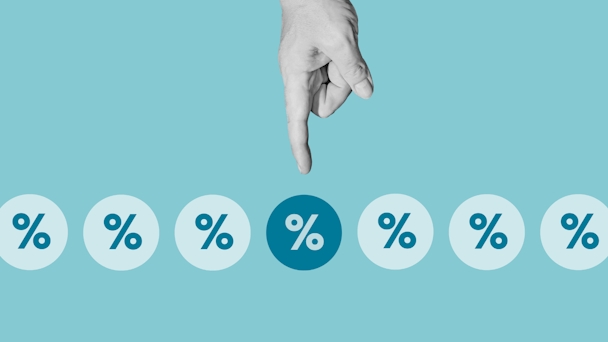Agency leaders debate how the Fed’s interest rate cut will impact advertising budgets
Ad industry execs are divided on how soon we can expect to see the material impact of reduced interest rates.

Adland is eager to see a surge of spend on the heels of federal interest rate cuts / Adobe Stock
On Wednesday, the Fed slashed interest rates for the first time in four years, cutting the benchmark rate by half a percentage point to a range between 4.75% and 5%. The adjustment aims to provide relief to businesses and consumers facing high borrowing costs and marks a strategic move to protect the labor market, which has shown signs of slowing.
The move is seen by many as a sign of a more relaxed posture against combating inflation. With inflation on the decline, many central banks have shifted their focus toward the job market, enacting changes designed to ensure more jobs aren’t lost. Additional rate cuts are expected later this year and in 2025.
A welcome change for many consumers and businesses, reduced interest rates are likely to have a ripple effect across the economy.
We surveyed top decision-makers in adland about how the rate decrease will impact the advertising and marketing landscape. While some believe a surge in spend is imminent, others share a more cautious outlook.
Want to go deeper? Ask The Drum
Expecting an influx of spend ahead
Alexis Coulter, managing director, adam&eveDDB West: “The cut to the interest rates means it is finally time to focus on brand again. For the past four years with economic pressures putting a stranglehold on marketing and advertising budgets, most companies shifted their dollars into cost-effective media buys that maximized reach and engagement but in doing so, they lost their brands. With cheaper borrowing and the year coming to a close, I believe companies will seize the opportunity once again to invest in their own halo. Capitalizing on high impact media that will require high impact creative work to boost and rebuild their brand recognition.”
Kate Jeffers, CEO, Leo Burnett: “Based on previous cycles, the Fed’s decision to slash interest rates should motivate consumer spending, leading companies to seize the opportunity and increase their marketing spend. That said, the past few years have conditioned consumers to be more budget-conscious, and to look for savings on goods in order to spend more of their paycheck on experiences. Considering this dynamic, companies must continue to invest in their brands. A strong brand cuts through the noise and enables loyalty, advocacy, forgiveness (when needed), product diversification and price elasticity. In this volatile environment, I believe strong brands are how companies win.”
Advertisement
Jorge Plasencia, cofounder and CEO, Republica Havas, and global chief client officer, Havas Creative Network: “As borrowing is more accessible, consumers have more money to spend which creates more opportunities for brands to invest, especially with the upcoming holiday season. For the industry, we can harness the momentum to push on creativity and innovation with clients.”
Shamsul Chowdhury, executive vice-president of paid social, Jellyfish: “The Fed's decision to slash rates a few weeks before the holiday season will have major implications for some advertiser budgets. With more discretionary income on hand for some consumers, they are likely to splurge on items they might have held off on before – think electronics, fashion, and other consumer goods. These categories stand to gain the most. Realizing this, many advertisers will likely ramp up their spending, eager to capture this influx of purchasing power. In fact, we could see brands launching their holiday campaigns even earlier than usual, jumping into the fray before the competition peaks – their goal being to get ahead of the Black Friday frenzy by locking in consumers who are now primed to spend, ensuring they’re top-of-mind before everyone else comes knocking. I expect to see brands push promotional offers to boost basket sizes and drive up average order values. With more disposable income circulating, the real question becomes: how can they maximize this new opportunity?”
Advertisement
Nidhi Shah, global business intelligence analyst, GroupM: “We view interest rate cuts as a positive for the advertising industry as further rate cuts could incentivize greater innovation and investment among companies as well as support new business growth, particularly, within the AI space. If we look historically, the period of near-zero interest rates between 2009 and 2017 coincided with the launch and growth of new businesses and business models, particularly among a large group of digitally focused companies and venture-backed companies, which often relied in part on advertising to grow customers and revenue. These ‘digital endemics’ – companies that primarily operate online – have been an important source of ad revenue for the industry as they tend to invest a higher percentage of revenue on advertising versus other advertiser categories, with a median of 12.8% in 2023 versus 5% for consumer packaged good companies.”
Jon Morgenstern, executive vice-president, head of investment, VaynerMedia: “In the near term, the advertisers that are most likely to benefit from the ... rate cut are those adjacent to financial services, home decor, automotive, real estate sales and construction, though interest rate cuts by no means benefit only those categories. The macroeconomic impact will be felt quite widely. If history is any indicator, take a look back at similar scenarios in the 1990s. In the months following the first rate cuts made after a long period of flat or increased rates, it was consumer packaged goods and pharmaceutical verticals that led the field in growth gains.“
Michael Leszega, vice-president of global market intelligence, Magna: “We believe the Fed’s decision to slash interest rates will be a net positive for advertising and marketing budgets. Here’s why: First is the impact on underlying consumer demand. The rate cut should lead to lower financing prices on big-ticket items, such as cars and houses, potentially freeing up discretionary income for consumers to spend elsewhere, leading to higher sales, profits, and ultimately, advertising spending. The second reason involves business balance sheets. Interest payments should decrease for businesses with floating rate debt, which could free up dollars that can be used for advertising spending while simultaneously preserving profit margins.”
Wait, not so fast…
Ryan McHardy, chief strategy officer, Dentsu Americas: “When the flows of money get cheaper, marketing aggression usually swells. But, this turn of the cycle will come with some atypical caution. While the growth rate of inflation slowed, the absolute rate we sit in is still astoundingly high. Given these macro headwinds, marketers need to stay vigilant. The question that marketers should be asking themselves is less about budgets and instead, about growth: How do we capture share in a smart, disciplined way as an anticipated loosening of wallets might take hold? You never want to miss getting ahead of growth.”
Jason Harris, CEO, Mekanism: “The Fed’s decision, while helpful for sparking some optimism in the market, will unlikely impact marketing budgets for 2024. Overall, industry-wide marketing spending is down approximately 15% from 2023 to 2024. While historically Q4 has been the busiest time of year, with most clients increasing their spending on incremental work, we’re unlikely to see the same infusion of marketing dollars as in years past. Marketers will be keeping a close watch on consumer spending in the coming months as some financial pressure is released. If the economy continues in this direction, it could indicate an uptick in spending in H2 2025, which is good news for the industry heading into the coming year.”
Suggested newsletters for you
Michele Tebbe, chief of client services and business growth, David&Goliath: “This is the first positive signal for the American economy in years. There’s recovery yet to be made, but with lower borrowing costs for mortgages, auto loans and credit cards, Americans’ spending power will create financial gains from individuals to corporations. For businesses, these gains make room for innovation and marketing spend, however this is a slow cycle, and we won’t feel a major impact for at least a few years. We won’t see bullish spending [at this point, and we can expect to see] some ‘wait and see’ [attitudes about] what implications on the economy will shake out post-presidential election. It’s net- directionally positive, with impact yet on the horizon.”
Peter Ravailhe, CEO and partner, Mother USA: “The Fed seems to be managing a “soft landing” for the US economy by many measures. However, families across America still struggle with over three years of rapid inflation and marginal wage growth, putting continued pressure on everyday living. This will likely continue to manifest itself in earnings headwinds for many consumer companies, putting continued pressures on costs, budgets, and profitability. I suspect the outcome of the elections will have a greater impact on future advertising and marketing budgets than the Fed’s movement in the short term.”
JJ Schmuckler, global chief growth officer, VML: “It can – and should – lead to more spending from B2C brands in Q4. The question is if and how it will sustain in 2025.”
For more, sign up for The Drum’s daily newsletter here.
